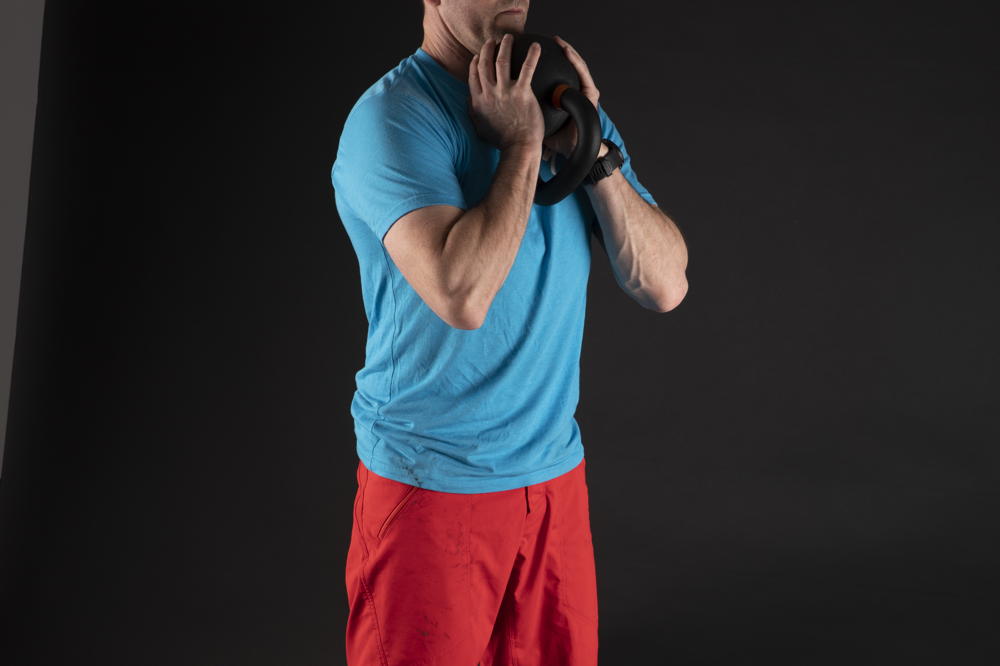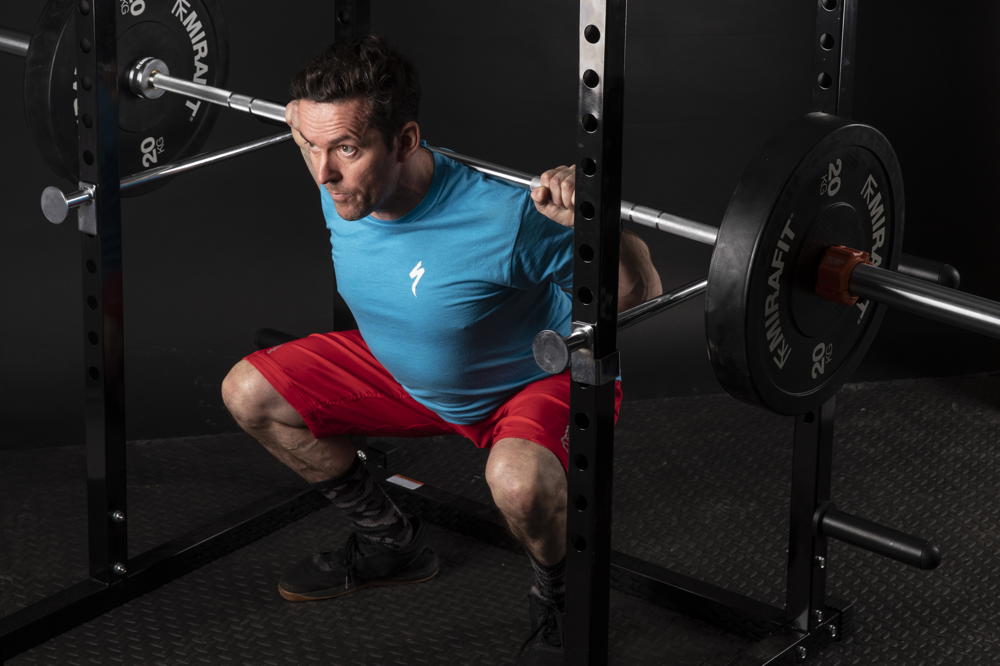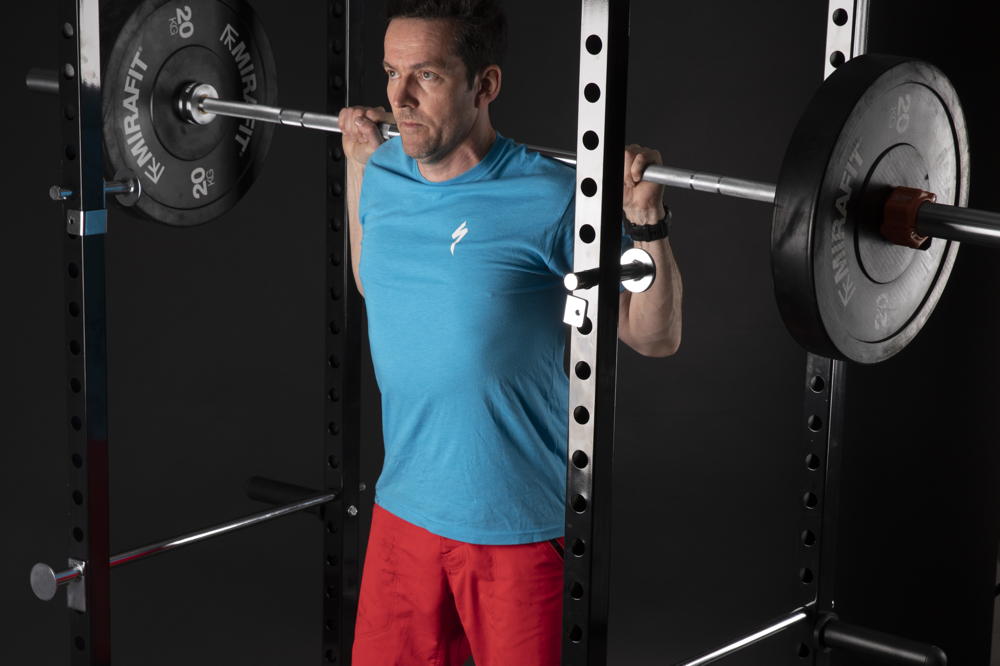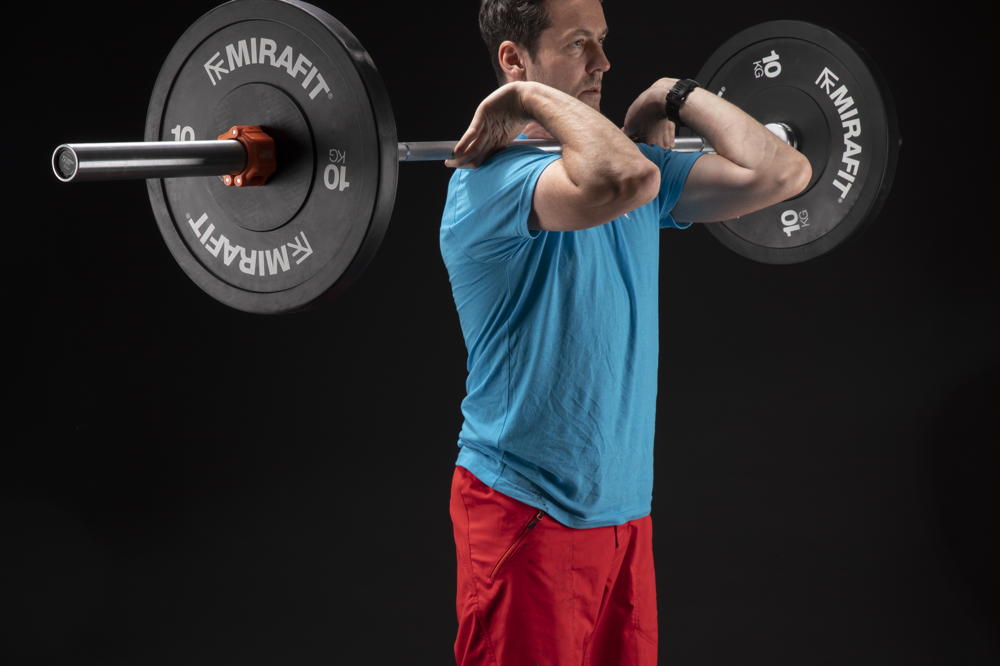The squat is the big beast of gym moves that'll give you monster strength on the trail
Squats are king of strength movements. Using the big muscle groups around the hips and legs as well as involving the core means crossover to riding is phenomenal as part of a mountain bike fitness program.
>>> Get fit for riding: four fundamental training principles
It goes without saying that improving strength and endurance in these areas will improve your riding. From pedalling up steep climbs to holding positions during descents, your legs and core are fundamental to your riding ability.
Although there are differences between how top riders train, one movement always shows up — the squat. Whether its XC whippets, enduro racers or downhill professionals, the effect of squatting benefits them all. So for the everyday trail rider, if you’re in the gym and not squatting you’re missing out big time.
There are many variations of the squat but these principals are consistent throughout most of them:
- Feet shoulder width apart, toes pointed out slightly
- Knees travel forwards and track direction of toes
- Torso remains as vertical as possible
- Spinal curve is maintained by bracing the core and reaching an appropriate depth.
Tip from the coach
The worst advice I hear is to squat lower. The depth of your squat is entirely dependent on you, your flexibility and your ability to keep your spine safe. If you squat too low you lose the neutral position of your spine and the risk of injury is dramatically increased. Not only that but the squat then becomes less effective at increasing your athletic ability. So if your squat depth isn’t great, work on your mobility but continue to squat to a depth you are safe and try not to listen to bad advice by going too low.


Level 1: Goblet Squat
Although it might seem counter intuitive that the first of the squat movements is holding a weight, this option actually improves the mechanics of the squat to make it easier. Having tightness in your ankles and hips restricts the depth of the squat, so holding the weight in front of you changes your centre of gravity. This counter balances you and encourages a more vertical torso position — key to a good squat. The goblet squat is a great movement to practice good form before moving on to more difficult/heavy squats.


Level 2: Back Squat
The back squat is where the magic happens because of the large loads (and speeds) you can use while performing them. With the bar on your back the weight has a direct connection to your hips through your torso. This means your core must be tight so there is no change in your spinal alignment. Use a narrower hand position to “pump up” your traps (the muscles on your upper back) to form a shelf for the bar, this will reduce discomfort and keep the bar closer to your centre of gravity. We call this the high bar back squat. For safety, use a squat rack so if you fail you don’t have to dump the bar or get pinned.


Level 3: Front Squat
Much more demanding on the core, this is the squat of choice for ultimate athletic performance. Because the bar is forward of your centre of gravity it puts more demand on your core and other stabilising muscles. There are options to change your hand position for those with mobility or injury issues of the upper limbs (which we see a lot of in riders), but the preferred is the “rack position”. Here you can rest the bar on your shoulders and not in your wrists. Because the bar is easily ditched from the front rack position it makes for a safe option to add load if you don’t have a full rack. Be careful lifting it from the floor though, it’s is a whole other ballgame.
The coach

Jonny Thompson is head coach for Fit4Racing, an online fitness programme for mtb riders. Once a forensic scientist, Jonny has devoted the last 10 years to coaching athletes from Paralympians to world number one enduro racers. His main focus with the Fit4Racing team is developing and delivering fitness programmes to pro and amateur riders.
Training the likes of Adam Brayton, Jonny also sends digital programmes to riders all over the world, many of whom ride professionally.



